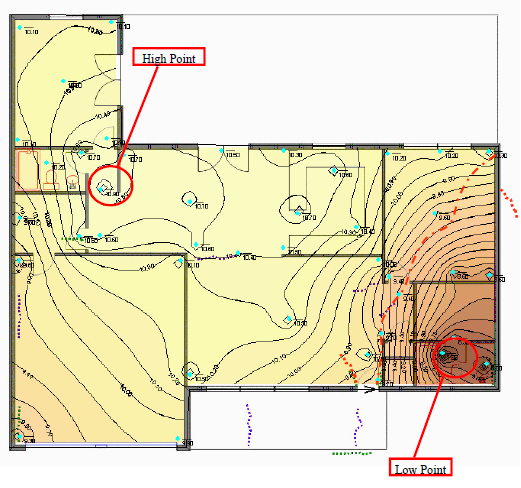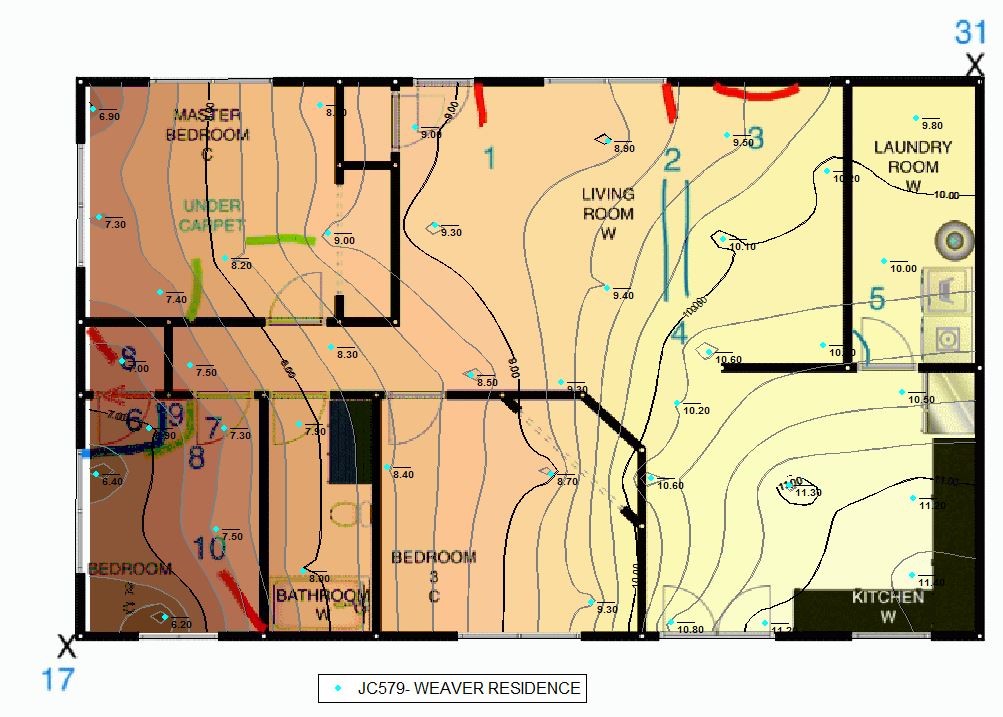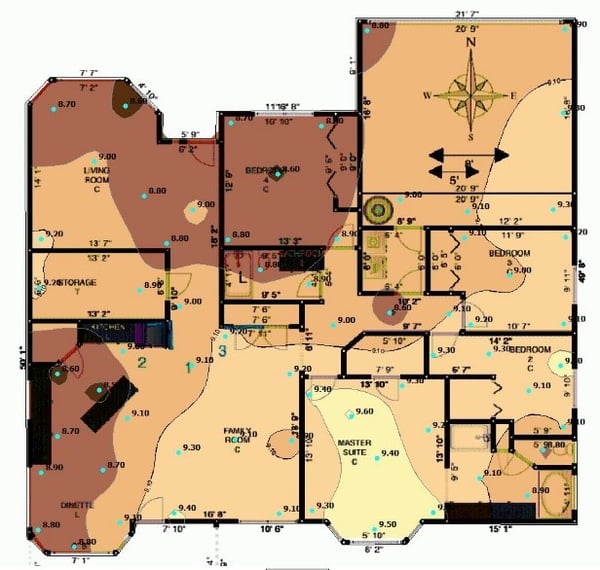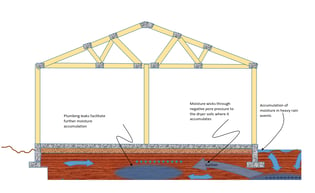In previous blogs, I discussed physical signs of stress and usually what they point to. The main tool used in diagnosing foundation problems is the floor level survey and its derivation the Topological Map. By looking at the patterns of the topo map, we can recognize patterns to help us understand the movement of the foundation and floor slab.
The first thing to understand is that highs and lows don’t tells us automatically what has moved up or what has moved down, since they are only relative readings not absolute elevations. In other words, the numbers only have meaning in how they relate to each other. This being the case, what we need to do is look at the patterns of topo lines and understand what they typically mean.
The first and obvious pattern is a mostly flat slab with one area that is lower. See below:

 If most of the slab is relatively flat with one area that is lower or higher, it is reasonable to assume that the lower area has dropped as opposed to the entire rest of the slab and foundation has heaved in perfect flat and uniform way and in harmony.
If most of the slab is relatively flat with one area that is lower or higher, it is reasonable to assume that the lower area has dropped as opposed to the entire rest of the slab and foundation has heaved in perfect flat and uniform way and in harmony.
Now, contrast this to a pattern that shows lower around the entire perimeter. Is it reasonable to assume that the entire perimeter settled uniformly in perfect harmony? Again this is really unlikely. Rather it is more likely that the middle area has risen up. See below:
 The pattern above is generally assumed to depict a heave pattern, although as often mentioned, there are exceptions for every rule.
The pattern above is generally assumed to depict a heave pattern, although as often mentioned, there are exceptions for every rule.
Sometimes, it is less obvious. Such as the case below:

 This topo survey shows low on one side and high on the other. So has the high side moved up? Or the low side moved down? At this point without more data, there is no clear interpretation.
This topo survey shows low on one side and high on the other. So has the high side moved up? Or the low side moved down? At this point without more data, there is no clear interpretation.
Sometimes the topo survey looks like a bunch of amoebas floating around as below:


We try to get excited about small changes such as 2/10th’s of an inch as usually seen as the amoeba. Rather we look for a significant consistent change as evidenced by a series of topo lines in close proximity. Like zebra stripes. These as shown on the examples above indicate significant movement that is worth paying attention to.
Because floor level surveys are only relative readings, we need ways to help us understand what has moved up and what has moved down. In my next blog, we will discuss how to do this!
Next: Rules of Thumb XI: https://www.foundationaz.com/blog/rules-of-thumb-diagnosing-foundation-problems-part-xi
Precious: Rules of Thumb IX: https://www.foundationaz.com/blog/rules-of-thumb-part-ix-signs-of-stress






